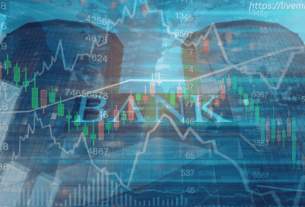Recently, Bitcoin underwent its much-anticipated “halving,” a significant event that happens approximately every four years.
This event marks a pivotal change in the cryptocurrency’s underlying technology aimed at reducing the rate of new Bitcoin creation.
Satoshi Nakamoto, the pseudonymous creator of Bitcoin, incorporated the halving mechanism into the cryptocurrency’s code from its inception.
Despite the excitement surrounding the halving, Bitcoin’s market performance remained relatively stable, experiencing only a slight decrease of 0.47% to settle at $63,747. Enthusiasts of Bitcoin see the halving as a sign of its increasing scarcity, but skeptics view it as a hyped technical alteration that artificially inflates its value. Nakamoto had stipulated a finite supply of 21 million tokens for Bitcoin.
the halving underscores Bitcoin’s value as an increasingly scarce asset. Nakamoto had stipulated a finite supply of 21 million tokens for Bitcoin. However, sceptics perceive the halving as merely a technical alteration hyped by speculators to artificially inflate the virtual currency’s value.
During a halving event, the reward cryptocurrency miners receive for creating new tokens is reduced, making it more expensive for them to mint new bitcoins.
- According to Partha Chaturvedi, Investments Lead at Coin Switch Ventures, we are at the beginning of a new era for Bitcoin.
- Layer 2 solutions like Stacks are improving network utilization, contributing to widespread adoption.
- Innovations like Runes, a new token standard, and Bitcoin’s re-staking will likely keep the ecosystem moving forward.

The halving process entails reducing the rewards received by cryptocurrency miners for creating new tokens, thereby making it costlier for them to introduce new Bitcoins into circulation.
Parth Chaturvedi, Investments Lead, CoinSwitch Ventures said, “Today, we are at the cusp of Bitcoin’s era. The network is getting better utilised as Layer 2 solutions like Stacks bring broader adoption for the network. Other innovations like new token standards (Runes) and the re-staking of Bitcoin will also propel the ecosystem forward.
If the landscape changes as anticipated after today’s halving event, it could ‘for the first time’ drive BTC’s annual inflation rate below that of gold. Such a scenario holds transformative potential, particularly among the younger generation, who may increasingly view Bitcoin as a modern-day store of value akin to how preceding generations regarded gold.
This shift in perception could fundamentally reshape investment attitudes and strategies for years to come.”
Liminal Custody Solutions’ Manhar Garret, head of India and Global Partnerships, predicts that the effects of the 4th bitcoin halving will not be immediately detectable.
The results are bound to be complex, with historical precedents showing increased market volatility and trading activity. This pattern is likely to repeat itself, leading to significant changes in the currency’s value and investor response.
Reduced availability due to Bitcoin halving has the potential to boost Bitcoin prices by attracting new investors to the crypto market.
The event could also affect altcoins while simultaneously inviting whole new products to enter the digital currency space.
With the advent of spot ETFs around the world, new financial instruments may emerge to counter the partial impact of Bitcoin, providing investors with a variety of opportunities to engage with the digital asset.
Shivam Thakral, CEO of BuyUcoin, India’s second-oldest crypto exchange, predicts a possible fall in the price of Bitcoin after its halving in the near future.
However, based on past experience he believes that a halving in the crypto market could lead to significant changes, resulting in a new high all-time peak in the next few months.
Looking back at historical patterns, it is clear that BTC dominance is waning while interest and investment in altcoins increases in the 12 to 18 month period after the halving.
“Cryptocurrency markets tend to exhibit volatility and explore new valuation levels after the Bitcoin halving event,” noted Bitget’s South Asia Head Jyotsna Hirdyani.
Throughout history, halving events have caused significant market activity. Bitcoin often makes impressive leaps, achieving unprecedented values. With Bitcoin gaining attention from institutional investors and the market showing remarkable strength, investors are dreaming of Bitcoin’s ability to redefine peak prices.
Rahul Pagidipati, CEO, ZebPay said, “With reduced block rewards, the Bitcoin protocol ensures that the asset remains deflationary through the halving process. In the long term, this supply reduction could attract more institutional and retail capital while amplifying Bitcoin’s stock-to-flow ratio.
ZebPay is bullish about both the short-term as well as the long-term outlook for Bitcoin and the wider crypto market.”
Rajagopal Menon, VP, WazirX said, “Historical analysis of Bitcoin halving events reveals distinct market phases: a pre-halving rally driven by speculation, followed by a phase of reaccumulation post-halving, leading to a parabolic surge to new highs. This parabolic curve is already being witnessed with Bitcoin reaching its all-time high even before the halving event.
This is an optimistic move given that usually the ATH is reached 6-12 weeks after the halving occurs.”
Edul Patel, CEO & Co-Founder, Mudrex said, “Historically, Bitcoin halving events have been associated with substantial price surges. For instance, during the first halving in 2012, Bitcoin’s price skyrocketed from $13 to a peak of $1,152 the following year. Similarly, the second halving in 2016 witnessed a surge from $664 to $17,760 in the subsequent year. The most recent halving in 2020 saw a surge from $9,734 to a staggering $67,549 in the following year.
In April 2024, the fourth halving will reduce the mining reward to 3.125 BTC per block. Remarkably, Bitcoin has already breached the $73,000 mark in anticipation of this event. Investors should continue to do their own research and diversify their portfolio.”
The excitement surrounding the US Securities and Exchange Commission’s approval of spot Bitcoin exchange-traded funds in January, coupled with expectations of interest rate cuts by central banks, has provided additional support for Bitcoin and other cryptocurrencies.
Previous halving events occurred in 2012, 2016, and 2020, with some crypto enthusiasts pointing to subsequent price rallies as indicators of potential post-halving price surges. However, many analysts remain sceptical of such predictions.
“We do not expect bitcoin price increases post halving as it has been already priced in,” stated analysts at JP Morgan earlier this week, attributing their stance to Bitcoin’s “overbought” status and subdued venture capital funding in the crypto industry this year.
Financial regulators have consistently cautioned against the high-risk nature of Bitcoin as an asset with limited real-world applications, though an increasing number have begun approving Bitcoin-linked trading products.
Andrew O’Neill, a crypto analyst at S&P Global, expressed scepticism regarding the predictive value of previous halving events on Bitcoin’s price trajectory, highlighting that multiple factors influence market dynamics.
Bitcoin has faced challenges in establishing a clear direction since reaching its record high in March, experiencing declines in recent weeks amidst geopolitical tensions and expectations of prolonged higher interest rates by central banks.
This development follows Bitcoin’s recent surge to an all-time high of $73,803.25 in March, after gradually recovering from the dramatic plunge it experienced in 2022. As of Thursday, the leading cryptocurrency was trading at $63,800.





